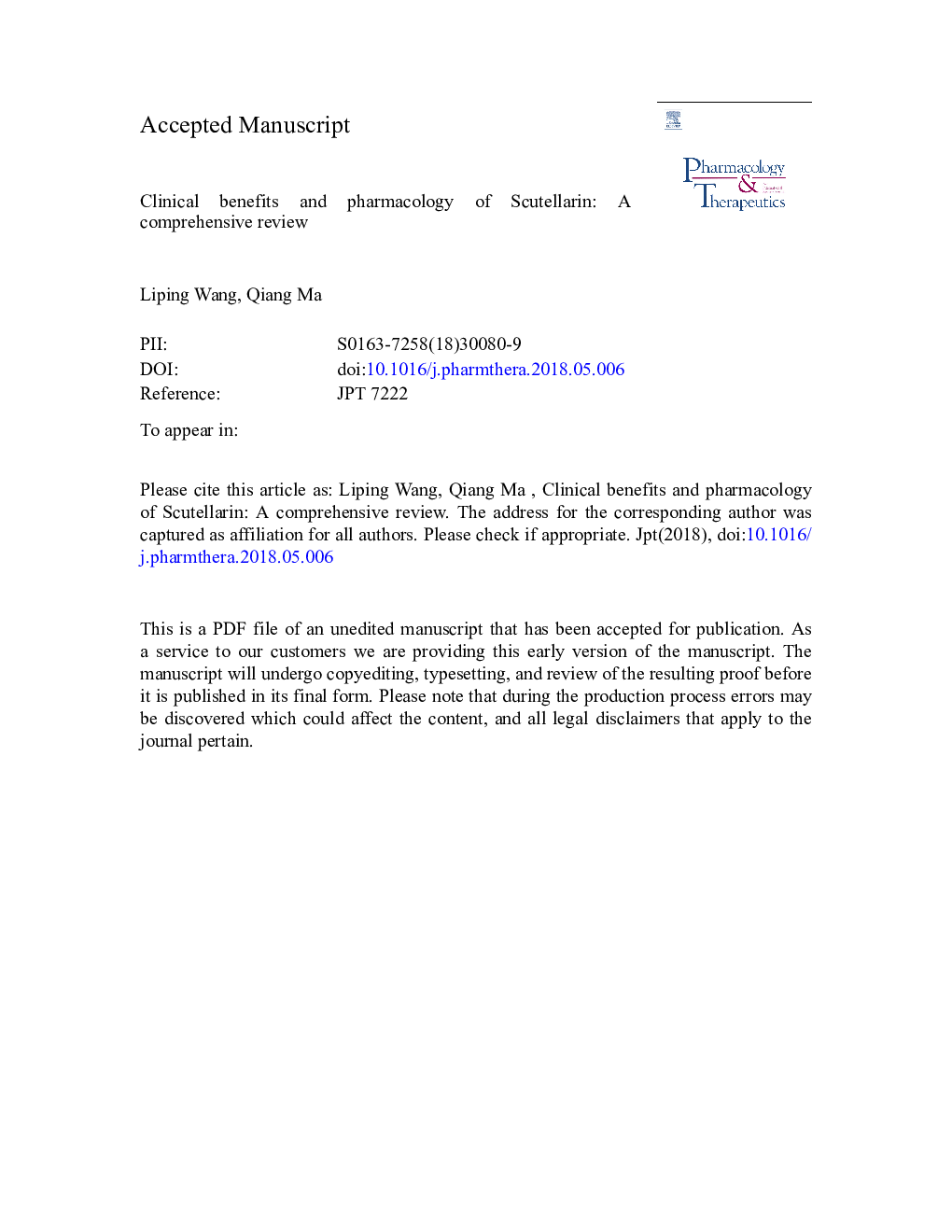| Article ID | Journal | Published Year | Pages | File Type |
|---|---|---|---|---|
| 11019351 | Pharmacology & Therapeutics | 2018 | 116 Pages |
Abstract
Stroke and myocardial infarction are among the most common causes of mortality and disability in the world. The ischemic injury underlying these illnesses is complex, involving intricate interplays among many biological functions including energy metabolism, vascular regulation, hemodynamics, oxidative stress, inflammation, platelet activation, and tissue repair that take place in a context- and time-dependent manner. The current drug therapy of choice is to timely resupply the blood to the ischemic tissue; but reperfusion may introduce additional harm to the tissue through a process known as ischemia/reperfusion injury. As such, new drugs that would complement reperfusion by providing neural and cardiovascular protection and by targeting multiple abnormalities in ischemia are receiving increased attention. Scutellarin is an herbal flavonoid glucuronide with multiple pharmacological activities. Owing to its multiple beneficial effects, such as anti-oxidant, anti-inflammation, vascular relaxation, anti-platelet, anti-coagulation, and myocardial protection, scutellarin has been used clinically to treat stroke, myocardial infarction, and diabetic complications. Over the past three decades, clinical and pharmacological studies have accumulated a body of evidence that not only demonstrated these therapeutic effects, but also provided significant insights into the pharmacokinetic behavior, therapeutic profile, and mode of action of scutellarin in humans and animal models. Medicinal modification and new drug delivery methods have led to the development of new derivatives and formulations of scutellarin with improved bioavailability, efficacy, and safety. Here we review the current literature on scutellarin to provide a comprehensive understanding of the pharmacological activity, mechanism of action, toxicity, and therapeutic potential of scutellarin for the treatment of ischemia, diabetic complications, and other chronic diseases.
Keywords
AMPKSTAT3CmaxNF-κBMMPLPSTGF-β1CyPSBPGFAPHDLUGTAβACEERKTTCiNOSi.p.RNSADEeNOSMCAOSTZiOpMRPPKCAT1RBCCAoPARPi.v.BcrpPKGNYHASMDADRWMDP-gpOATPi.gScutellarinMNCVAUC0-∞microRNA-7MDASNCVAMP-activated protein kinaseHCCI/RMAPKMiR-7ROSIschemic injuryAngiotensin-converting enzymeAngiotensin IIAktAIFTherapeutic effectAdverse drug effectstreptozotocinamyotrophic lateral sclerosisECGelectrocardiogramNew York Heart Associationmiddle cerebral artery occlusionischemia/reperfusioninterleukinAlzheimer's diseaseALSTransforming growth factor β1Triphenyl Tetrazolium Chloridetriglycerideintraperitoneal injectionintragastric administrationIntravenous administrationstandardized mean differencetumor necrosis factor-αmaximal plasma concentrationCNSbilateral common carotid artery occlusionAng IISODBBBNSCLCNon-small cell lung cancerSensory nerve conduction velocitymotor nerve conduction velocityToxicityinducible nitric oxide synthaseendothelial nitric oxide synthaseSuperoxide dismutasecytochrome P-450central nervous systemAdverse drug reactionapoptosis-inducing factorPharmacokineticsconfidence intervalVascular endothelial growth factorVascular Endothelial Growth Factor (VEGF)TNF-αsystolic blood pressureIntraocular pressureLADhigh density lipoproteinlow density lipoproteinLDLlipopolysaccharidematrix metalloproteinasemalondialdehydeBlood-brain barrierMechanismMean residence timeweighted mean differenceNADodds ratioNitric oxidenicotinamide adenine dinucleotideGlial fibrillary acidic proteinmultidrug resistance-associated proteinbreast cancer resistance proteinprotein kinase GProtein kinase Cmitogen activated protein kinasepoly (ADP-ribose) polymeraseorganic anion-transporting polypeptidepolyethylene glycolPEGβ-amyloid peptideleft anterior descendingHepatocellular carcinomatotal cholesterolextracellular signal-regulated kinasereactive nitrogen speciesReactive oxygen speciesANG II type 1 receptor
Related Topics
Health Sciences
Pharmacology, Toxicology and Pharmaceutical Science
Pharmacology
Authors
Liping Wang, Qiang Ma,
